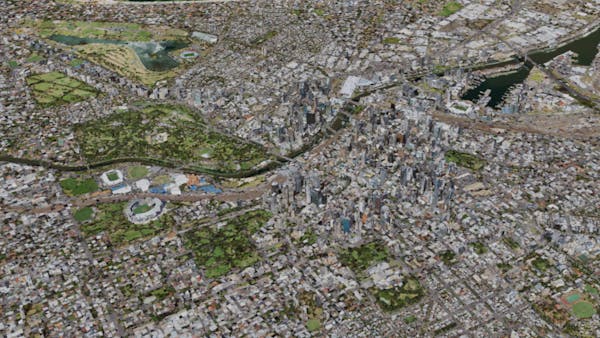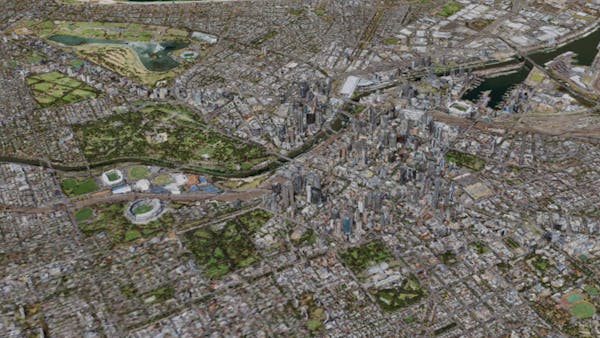Cesium ion Photogrammetry Update - Smooth 3D Tiles, Smooth Performance
Continuing with our commitment to produce the highest quality 3D tilesets, we’ve updated Cesium ion and our on-premise tools to produce photogrammetry tilesets delivering improved visual quality with the same or better performance.
To recap, Cesium ion’s photogrammetry tilesets use lightweight, simplified placeholder tiles for smoother streaming. CesiumJS renders these tiles temporarily while full-detail tiles stream in, or at areas far away from the camera where full detail is indistinguishable, which uses fewer network resources.
The updated photogrammetry tiling pipeline produces smoother, less distorted placeholders without significantly increasing tile size, which improves visual quality when loading views over constrained network connections. This is especially apparent with wide views of large-area, high-detail datasets like this 10-centimeter model of Melbourne, Australia, captured by Aerometrex:

Melbourne, Australia, captured by Aerometrex and tiled using different versions of the Cesium ion Photogrammetry tiler. Pre-update tileset on the left, updated tileset on the right. The updated tileset becomes recognizable more quickly.
For a closer look, here’s a comparison of our AGI Headquarters model before and after the tiler updates. This comparison has been slowed down and edited to highlight the first few LOD changes. Observe the difference as the tilesets load:

AGI HQ model, tiled before (left) and after (right) tiler updates. Window and sidewalk lines are smoother and less distorted at low LODs (earlier in the animation) with the updated tileset.
The first tile in the updated tileset presents a better summary of the building without increasing rendering cost or load time. Transitions between levels-of-detail are also smoother and less jarring.
The updated placeholders are also sufficient as-is for far-away views when smooth performance is more important than accuracy, such as on mobile devices with small screens and limited bandwidth. Apps with high-precision modes also benefit when rendering bird’s eye overviews instead of measurement-quality closeups.
Rendering placeholders when acceptable reduces the total number of requests and overall data streamed. Here’s two versions of a distant view over Melbourne with only 23 tiles:


Compare 23 tiles from the earlier tileset on the left with 23 tiles from the updated tileset on the right. Note the reduction in visual artifacts and cleaner appearance.
Reduced visual artifacts make the 23 placeholder tiles usable over a wider range of view distances. This gives developers more flexibility when balancing visual quality against load time and rendering performance.
Try the photogrammetry tiling updates today by signing up for a free ion community account, or evaluating our on-premise 3D Tiling Pipeline.